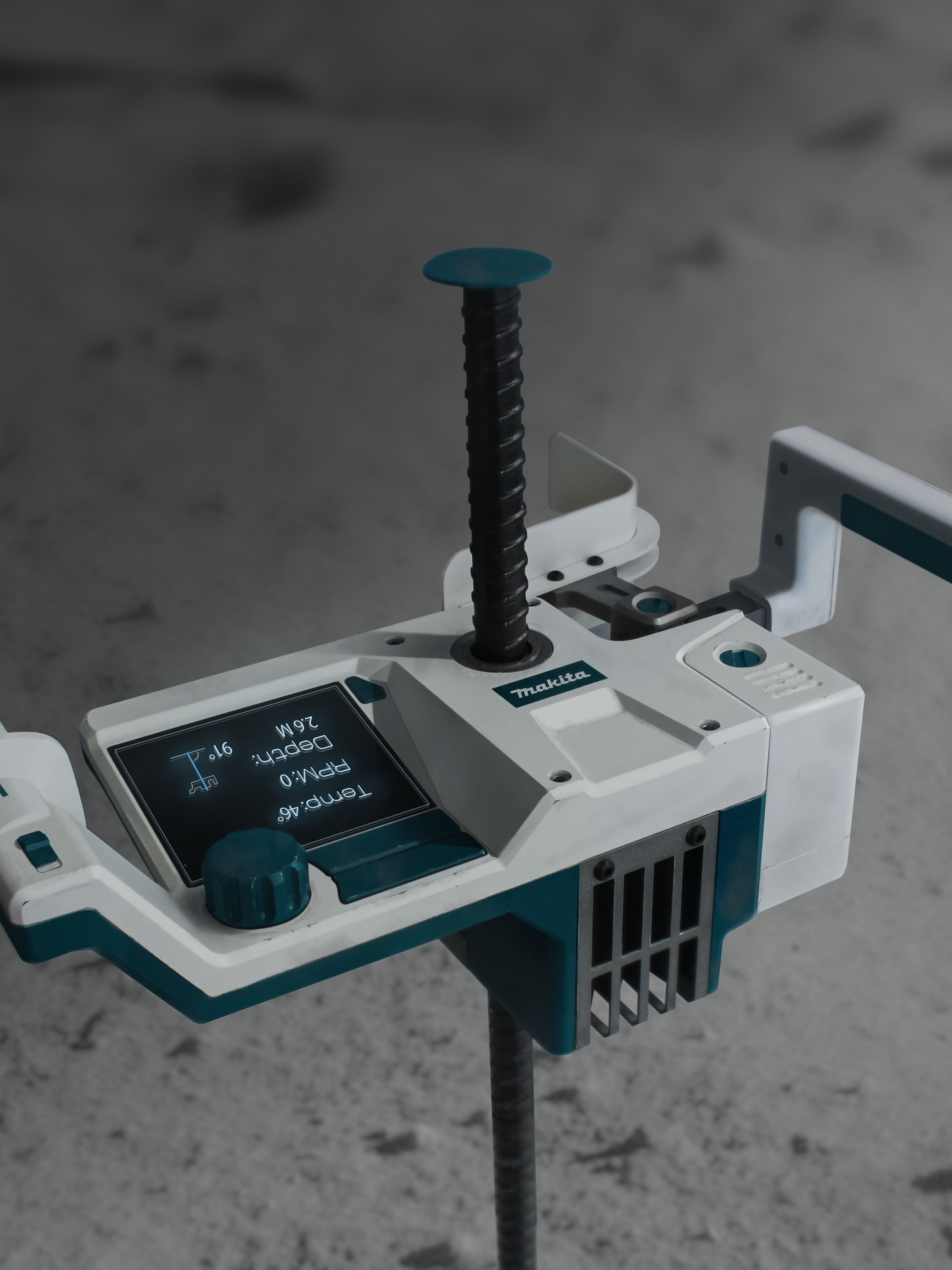Designing a drug testing kit that improves the
anti-doping experience for athletes
anti-doping experience for athletes
This was my 4th-year honours project whilst I was studying Industrial Design at Massey, I worked on this over the course of 8 months.
I have included a selection of my work here. I hope you enjoy learning about my design process. If you have any questions, I'm happy to answer them
01
Opportunity
Elite athletes devote huge amounts of time and effort training and competing in their sports.
Anti-doping testing is an essential step in ensuring athletes are competing on a level playing field.
Anti-doping testing is an essential step in ensuring athletes are competing on a level playing field.
Within anti-doping testing, the current urine sampling process is complicated, invasive, and messy. Recent examples of tampering with anti-doping equipment also raise doubt about the quality and effectiveness of existing anti-doping equipment and systems.
This provides an opportunity to design a product or products that can improve the user experience and integrity of urine sampling and testing.
02
Research
Alongside a context review, I conducted a series of interviews talking to both athletes and anti-doping staff/experts to gain an understanding of the different stakeholder perspectives.
I mapped the average experience of athletes throughout a testing procedure, this is shown on the right of this page. Images have been provided for the two steps athletes found most stressful.
A short video showing an example of the existing testing process
I conducted case studies on the major anti-doping kits on the market. The most prevalent kit is the Berlinger Bereg kit which is shown below
Common pain points that were brought up during interviews
03
concept brainstorming
Brainstorming a range of conceptual solutions to address the pain points outlined in my research.
Two of the ideas on this page were selected to develop in tandem because I deemed them the
most feasible.
most feasible.
A series of different functional prototypes were made, each exploring a different way the selected ideas could be combined.
Functional prototypes were then assessed using roleplay, one prototype stood out as the best due to its ease of use and functional characteristics.
Functional prototype of the selected concept.
04
Concept development
With a conceptual solution in place, I could begin to develop each of the components involved.
Here I am exploring potential mechanisms for new locking bottles.
Developing the shape of the new collection vessel; using roleplay and test rigs to assess different funnel shapes, handle lengths and handle angles.
Ideating aesthetic of the combined system.
Adjusting preferred bottle ideas to be compatible with manufacturing techniques.
Visualizations of the three strongest concepts, the one on the left was selected to continue with.
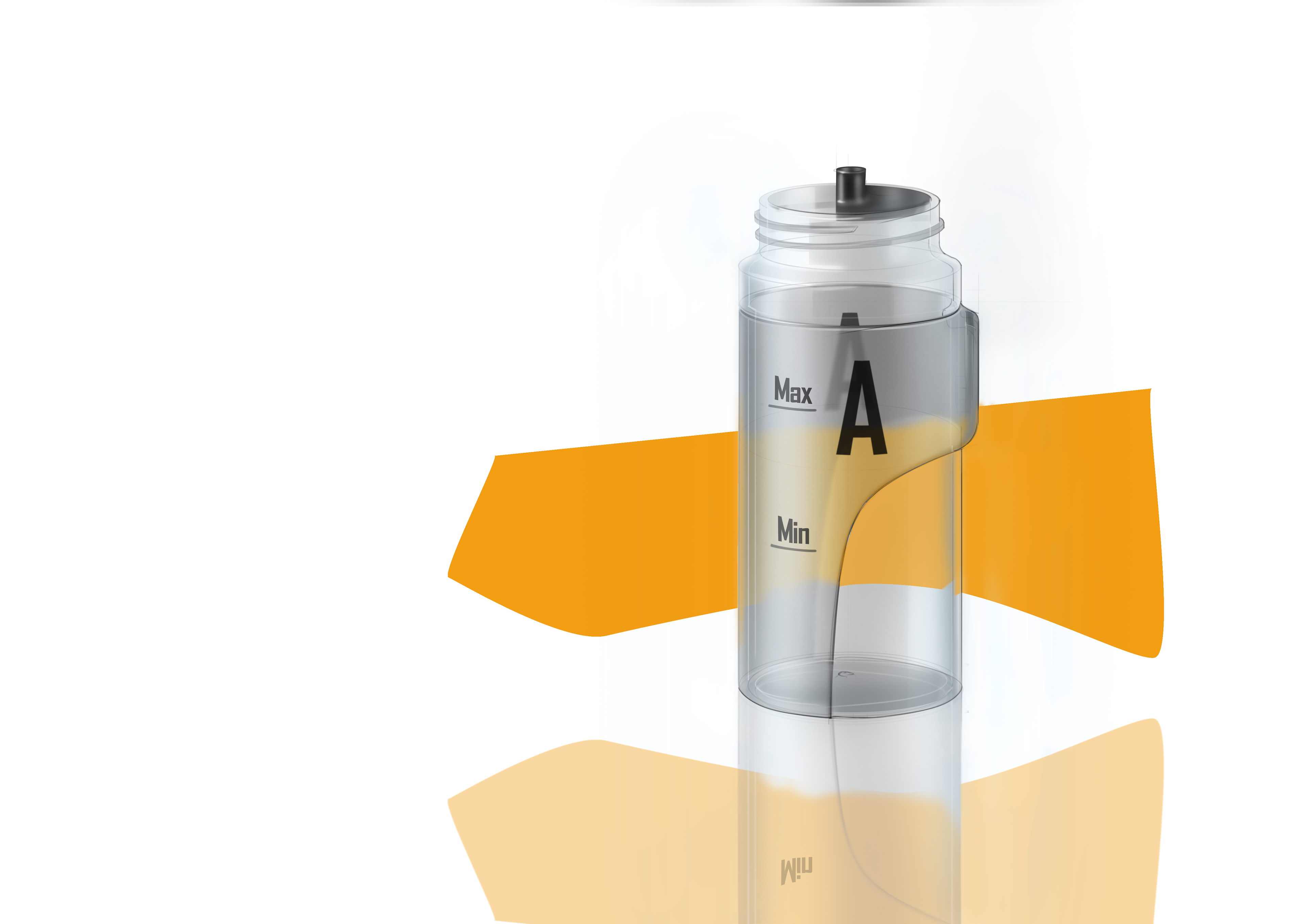
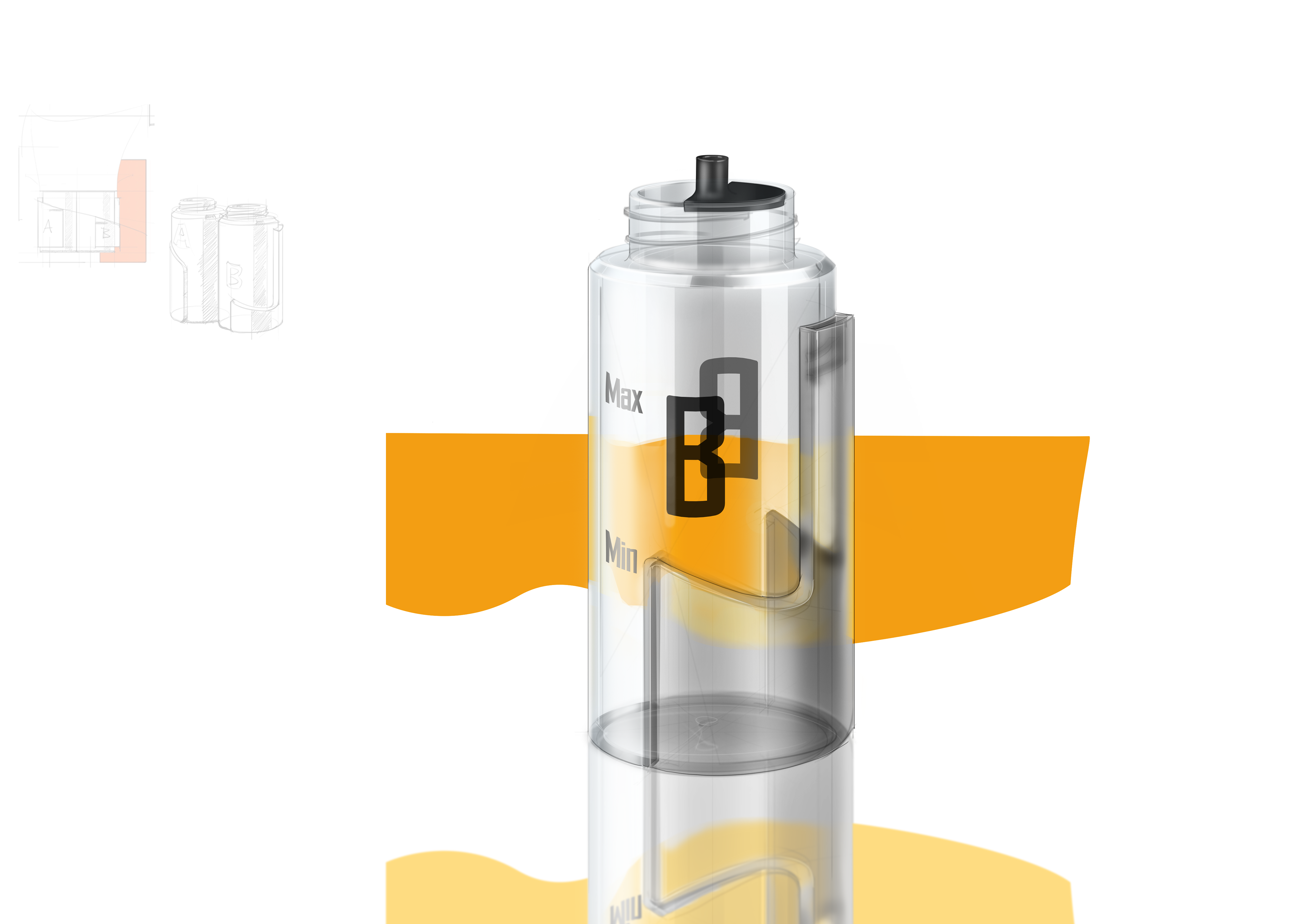
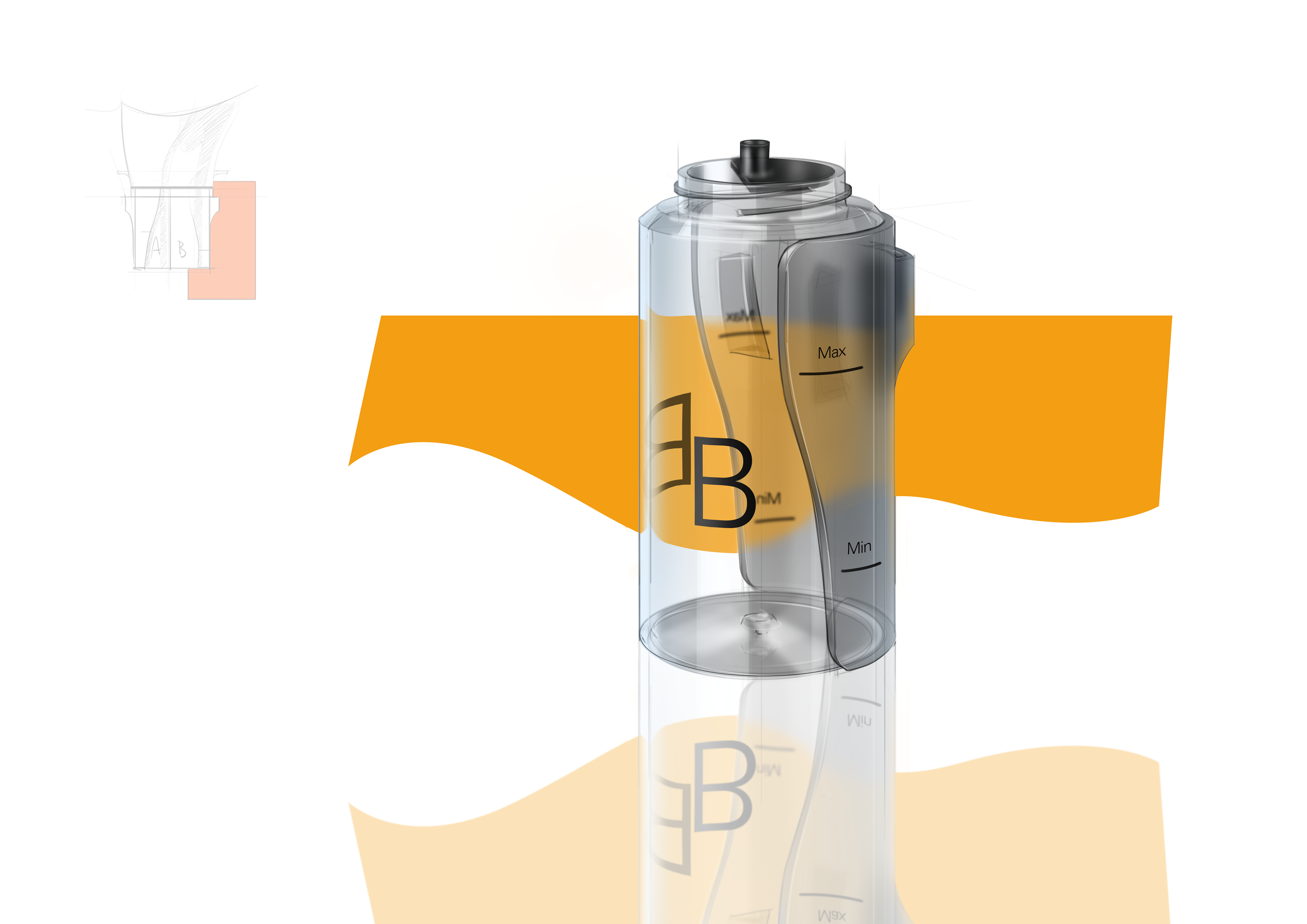
Ideating collection vessel to fit the aesthetic of selected bottle concept
Photoshop visualization of the selected design.
05
Development Prototyping
With the final design in place, I iterated a series of prototypes refining tolerances, proportions, and fit.
06
Final Design
Once I had resolved all of the details I made a 1:1 scale functioning aesthetic model of the testing kit.
I created a set of production drawings for the testing kit, some of the pages are shown below.
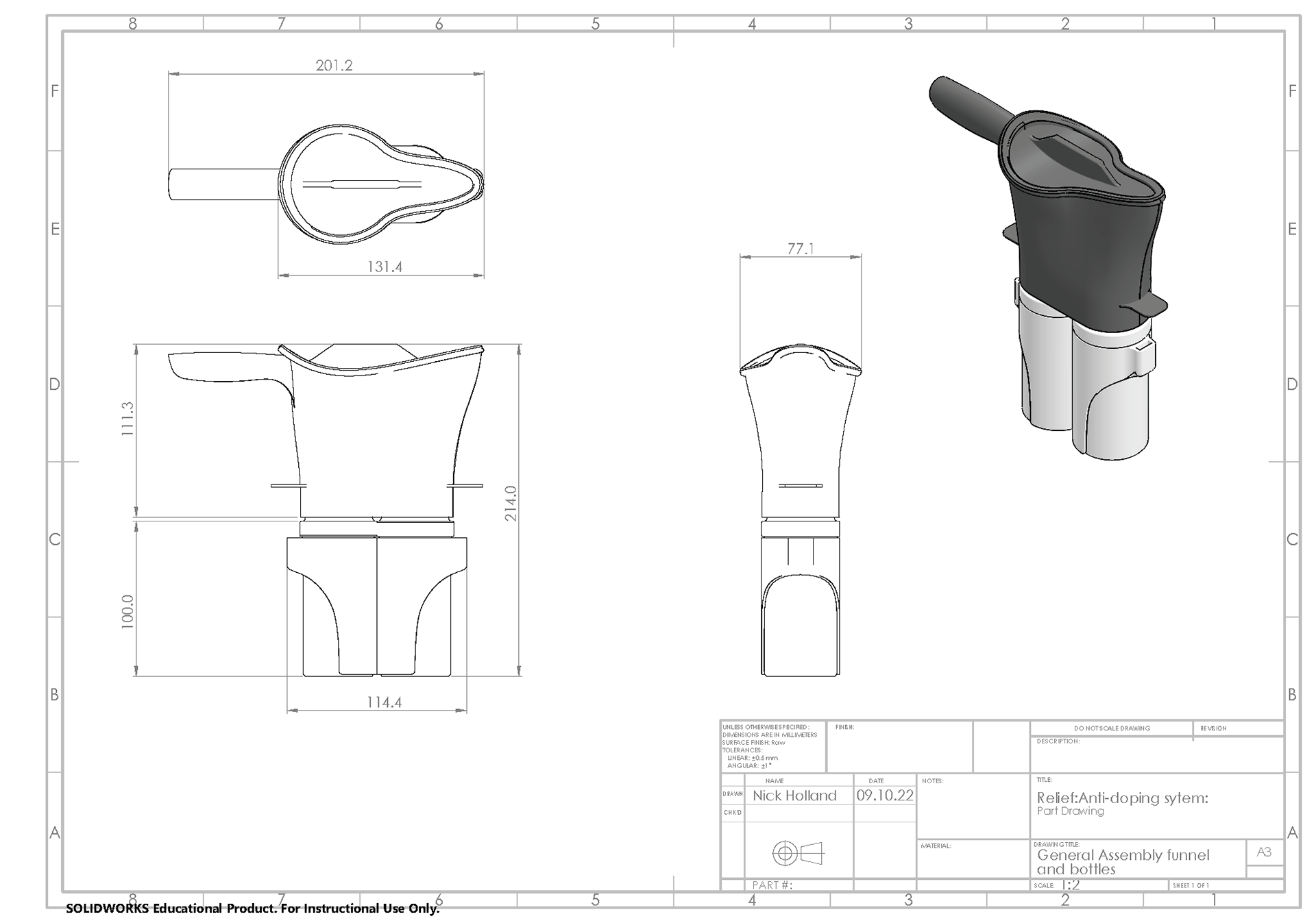
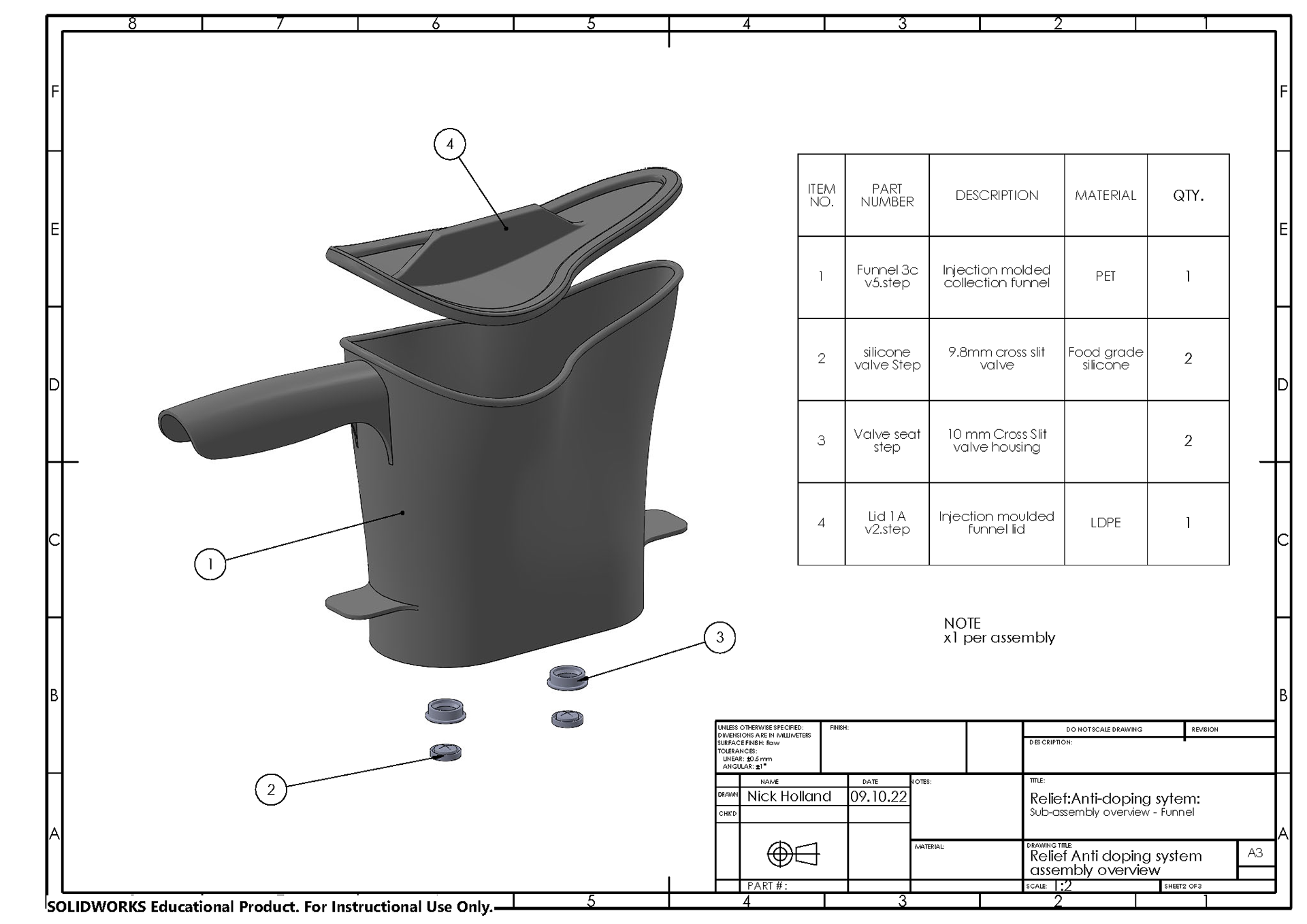
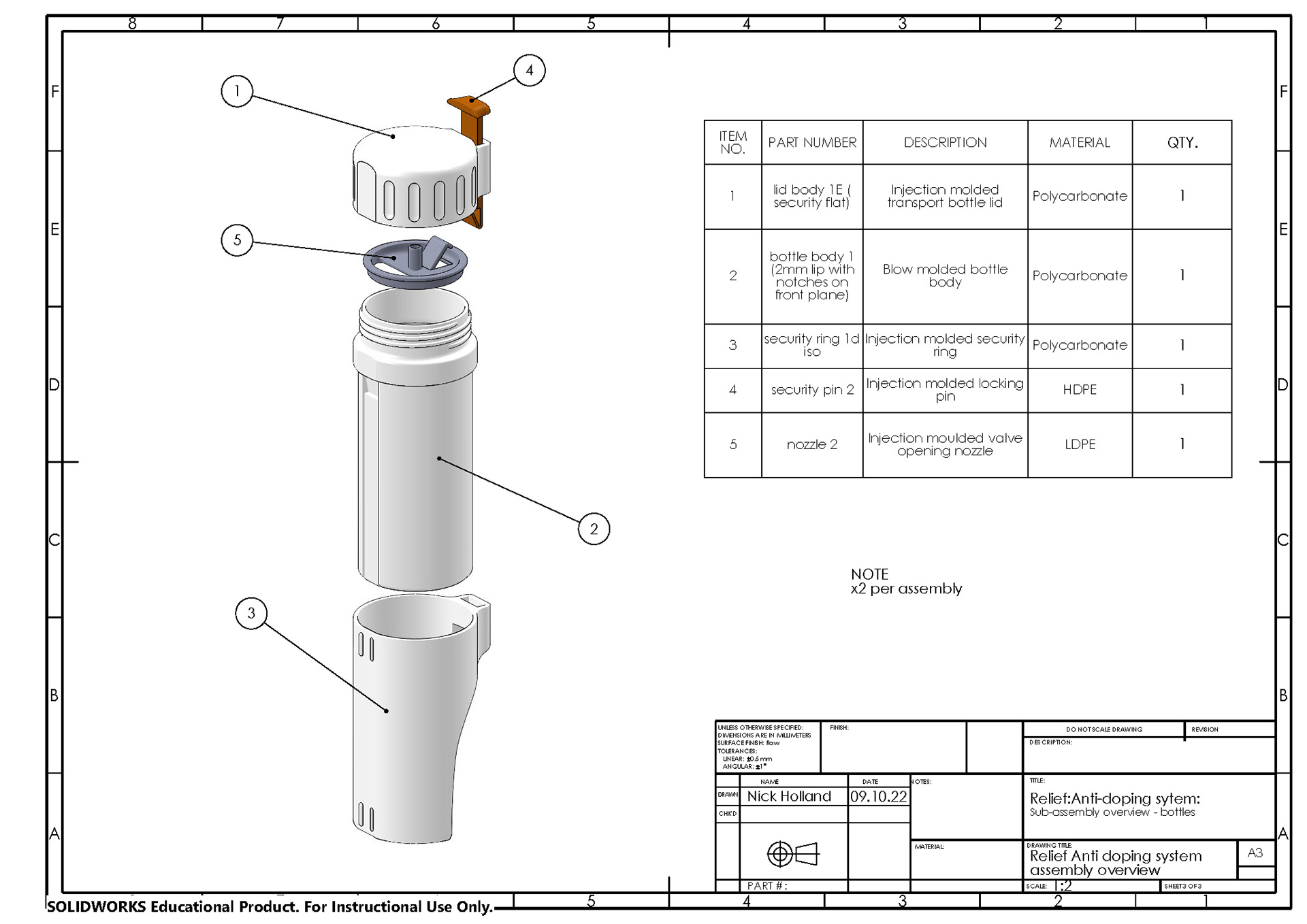
07
Design evaluation from Drug Free Sport New Zealand
Drug Free Sport New Zealand (DFSNZ) is New Zealand's official anti-doping organisation, this is what they had to say about my design when I approached them for feedback:
“DFNSZ commends the innovative design of the
‘Pre-Podium anti-doping kit’.
‘Pre-Podium anti-doping kit’.
A huge advantage is the ergonomic design of the collection beaker. We see great benefit, specifically for female athletes, compared to the commercially available devices.
Additionally, the ability to split a sample into A and B bottles without the risk of spillage and potential contamination is also a great design feature. DFSNZ would consider purchasing the kit if available in the anti-doping market.”
Additionally, the ability to split a sample into A and B bottles without the risk of spillage and potential contamination is also a great design feature. DFSNZ would consider purchasing the kit if available in the anti-doping market.”
“The query we have is regarding the sustainability for the product and materials used.”

